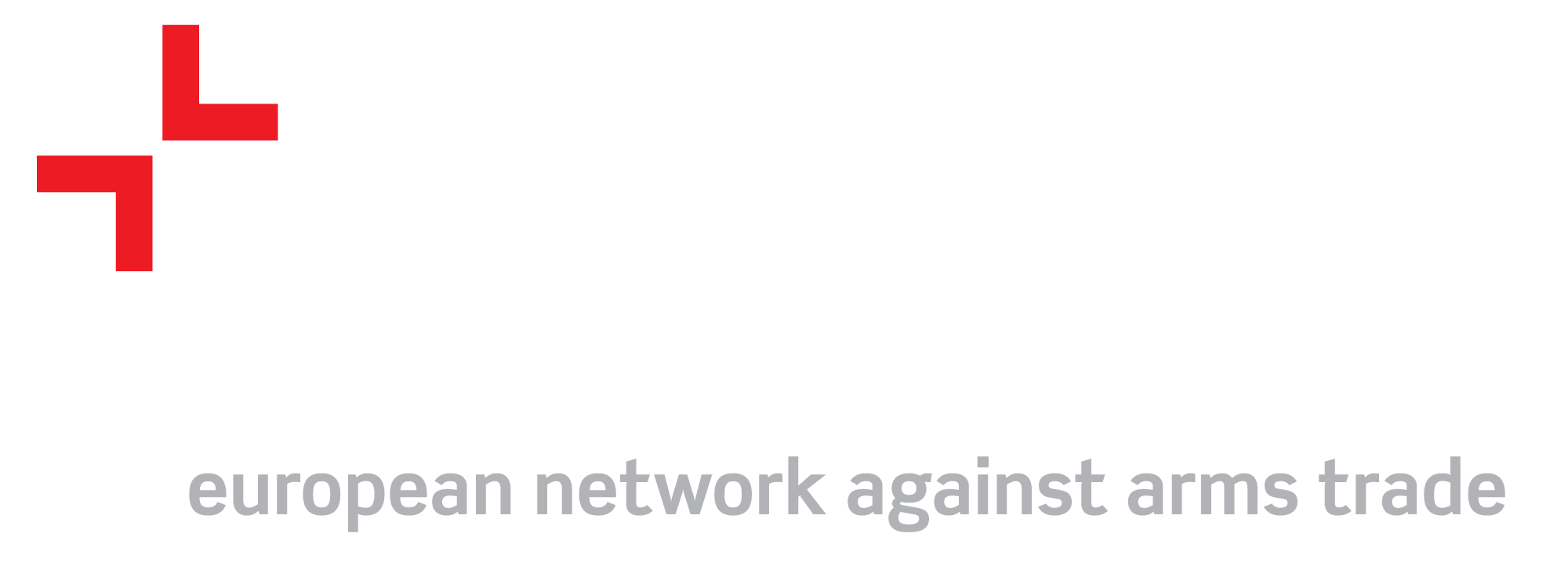introduction
Saudi Arabia and the UAE are among the largest customers of the European arms industry. Several of their major weapons systems used in Yemen have been made in Europe. Firms from all over the EU have been involved in their production and remain involved in maintenance and repair or in the export of ammunition. Meanwhile, the ongoing war seems to be no reason for most European states to stop exporting new weapon systems.
This report will document the role of European arms in the war in Yemen. It is divided into three parts, beginning with a brief overview of the conflict in Yemen. The second section documents the use of European weapons in the air war, the naval blockade, and the land war. The report concludes with an analysis of the apparent contradiction between the export of arms to Yemen and EU arms export law.
The inventory of military material and companies is a best effort based on information from open sources. However, we do not claim to have been able to be comprehensive. An important source and starting point for this research, which we have not referenced each time, is the SIPRI Arms transfers database1. For the identification of companies the Arms Trade Watch database was used as well, which is maintained on this website.
Lastly, we were able to make use of the results of several investigative journalism projects, such as the EUarms network and Disclose, as well as the research done by several ENAAT member organisations, Amnesty International and other human rights organisations. This report builds on the results of these research efforts and combines them to present an overall picture of how European weapons fuel the war in Yemen.
The war in Yemen
The civil war in Yemen and the military intervention since 2015 by Saudi Arabia, the United Arab Emirates (UAE) and several other countries has become one of the gravest humanitarian crises today. All sides have committed grave breaches of international humanitarian law. The bombardments of the Saudi coalition have caused a large amount of civilian casualties. The naval blockade meant to stop the inflow of arms has also deprived the civilian population of food, fuel, and other vital necessities. The result is widespread famine, increased risk of diseases such as cholera, and a growing number of internal refugees.
Meanwhile the war has turned into a deadly stalemate. None of the fighting parties can claim victory, not now and not in the near future. Nor has a political solution for the conflict been brought closer. All indications suggest that the war will continue for years, ravaging infrastructure and the civilian population.
Civil war before the Saudi intervention
The civil war in Yemen began before the military intervention in 2015. Historically, Yemen existed as two different states, North and South Yemen, which became independent at different times. North Yemen gained independence after the collapse of the Ottoman Empire in 1918. South Yemen remained a British protectorate, only gaining independence in 1967. Tensions between different parts and population groups have since then remain strong and have regularly erupted in civil war, often with Saudi involvement.
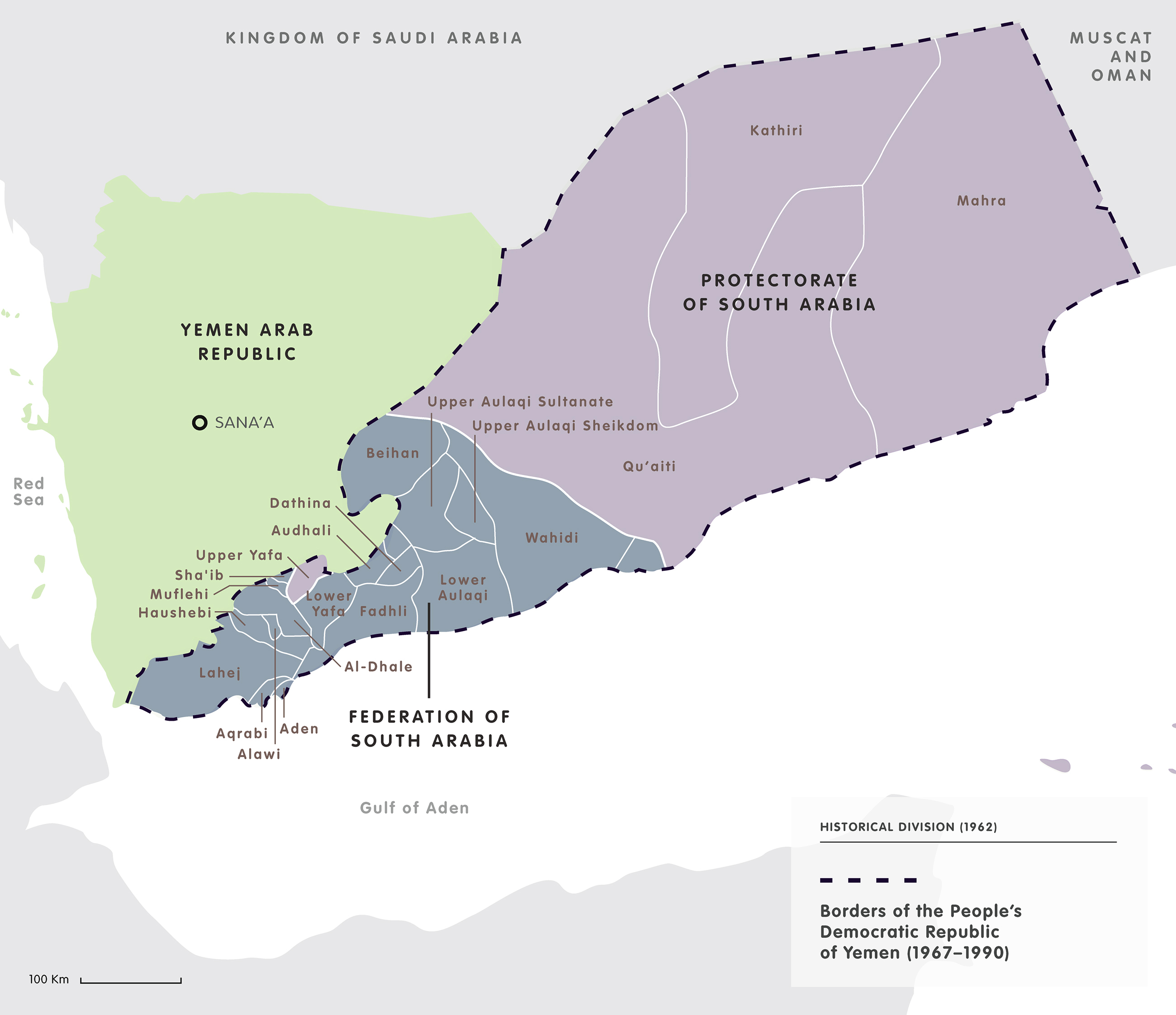
image: ECFR
During the Cold War both parts ended up at different sides, but in 1990 merged into a unified Yemen. Ali Abdullah Saleh, who was the president of North Yemen since 1978 (after a military career and coup), became president of the unified Yemen. Unification did not bring stability, with civil war between North and South in 1994 and a new insurgency in 2009.
Other tensions exist as well. One of the major conflicts before 2015 was between the Houthi movement and the Yemeni government under Saleh. The Houthi movement consists of members of a branch of Shia Islam, the Zaidi or Zaidiyyah, which is an important religious minority in Yemen. The name ‘Houthi’ refers to the al-Houthi family, whose members lead the movement. The movement formed a strong opposition group against Saleh and started an insurgency after the killing of its leader in 2004. The Northern region of Yemen, especially the Houthi stronghold of Sa'dah, has seen constant armed conflict with the Yemeni government ever since. This included regular clashes with the Saudi Army near the border and airstrikes by the Saudi air force.
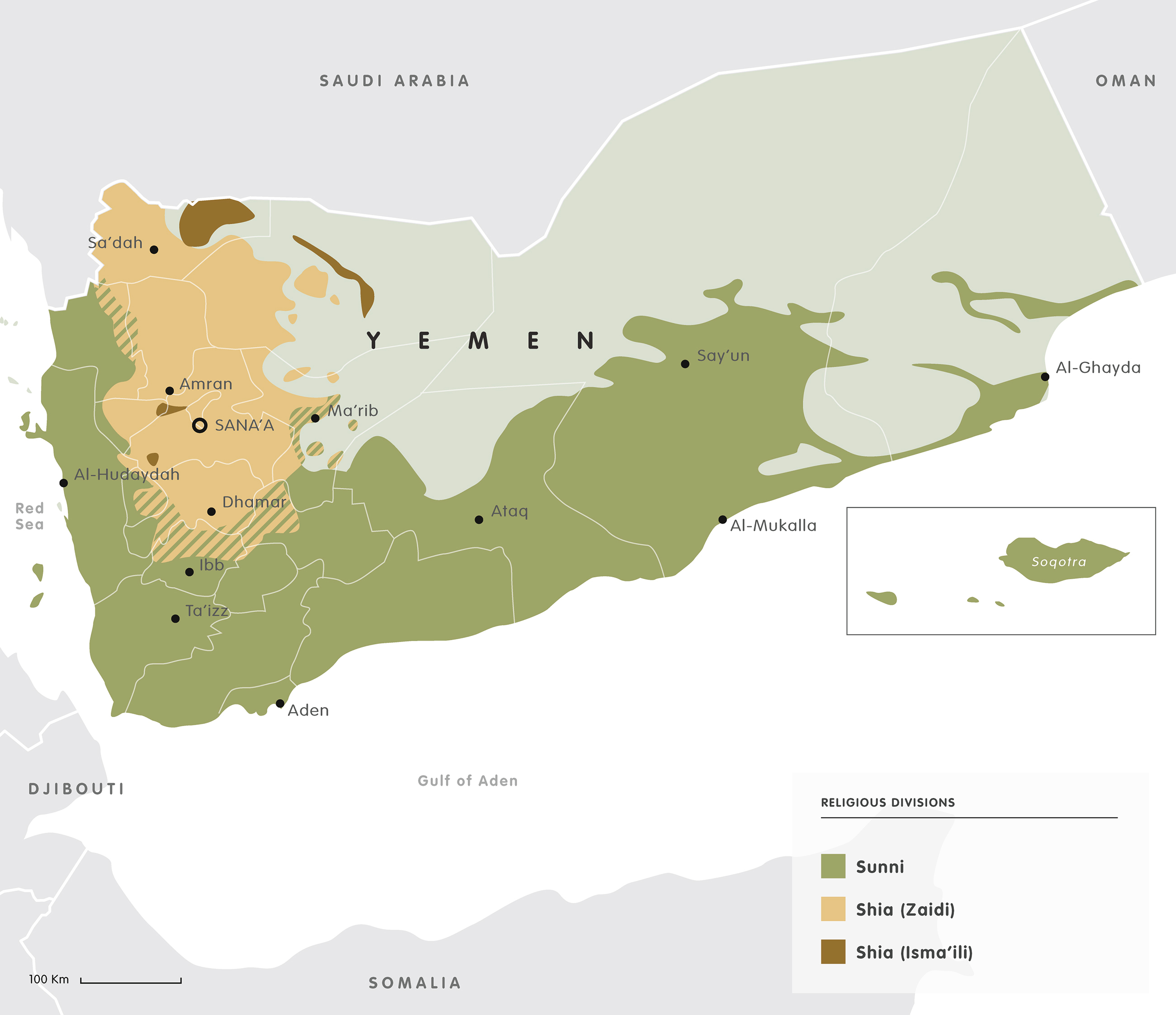
image: ECFR
The Arab spring in 2011 had a destabilizing effect on the Yemeni government and resulted in a surprising restructuring of alliances. The wave of protests in the Arab world reached Yemen as well, with mass demonstrations in the capital Sana’a and other cities. The protests sparked internal power struggles inside the government and mass defection from the army. Without his base of support in the military, Saleh was not able to maintain control of the country. Under strong pressure from Saudi Arabia and the Gulf Cooperation Council (GCC), Saleh accepted an agreement to transfer power to Abdrabbuh Mansur Hadi (the vice-president since 1994 and also a former high ranking military officer). Although the transfer seemed a cosmetic internal shuffle, it fundamentally altered the balance of power. In an attempt to regain control, Saleh allied with his former enemies, the Houthis, against the Yemeni government led by his former Vice President.
In 2014 the Houthis established control of Sa’dah province and in September Houthi fighters took control of the capital. The Yemeni Army, which was largely under control of Saleh family members, did not intervene during the take-over. The UN unsuccessfully attempted to broker a unity government. In January 2015, after a dispute over a proposed new constitution, Houthi fighters occupied the Presidential Palace and several government institutions. They forced president Hadi to resign and placed him under house arrest.
One month later, Hadi was able to escape to Aden and withdrew his resignation, denouncing the Houthi takeover. The Houthi movement meanwhile formed a Revolutionary Committee and announced to take over the government. However, they failed to come to an agreement with other political factions. Consequently, in early 2015, two governments were claiming power. Saleh and his General People's Congress (GPC) sided with the Houthi government. The international community refused to recognize this government and continued to support the Hadi government.
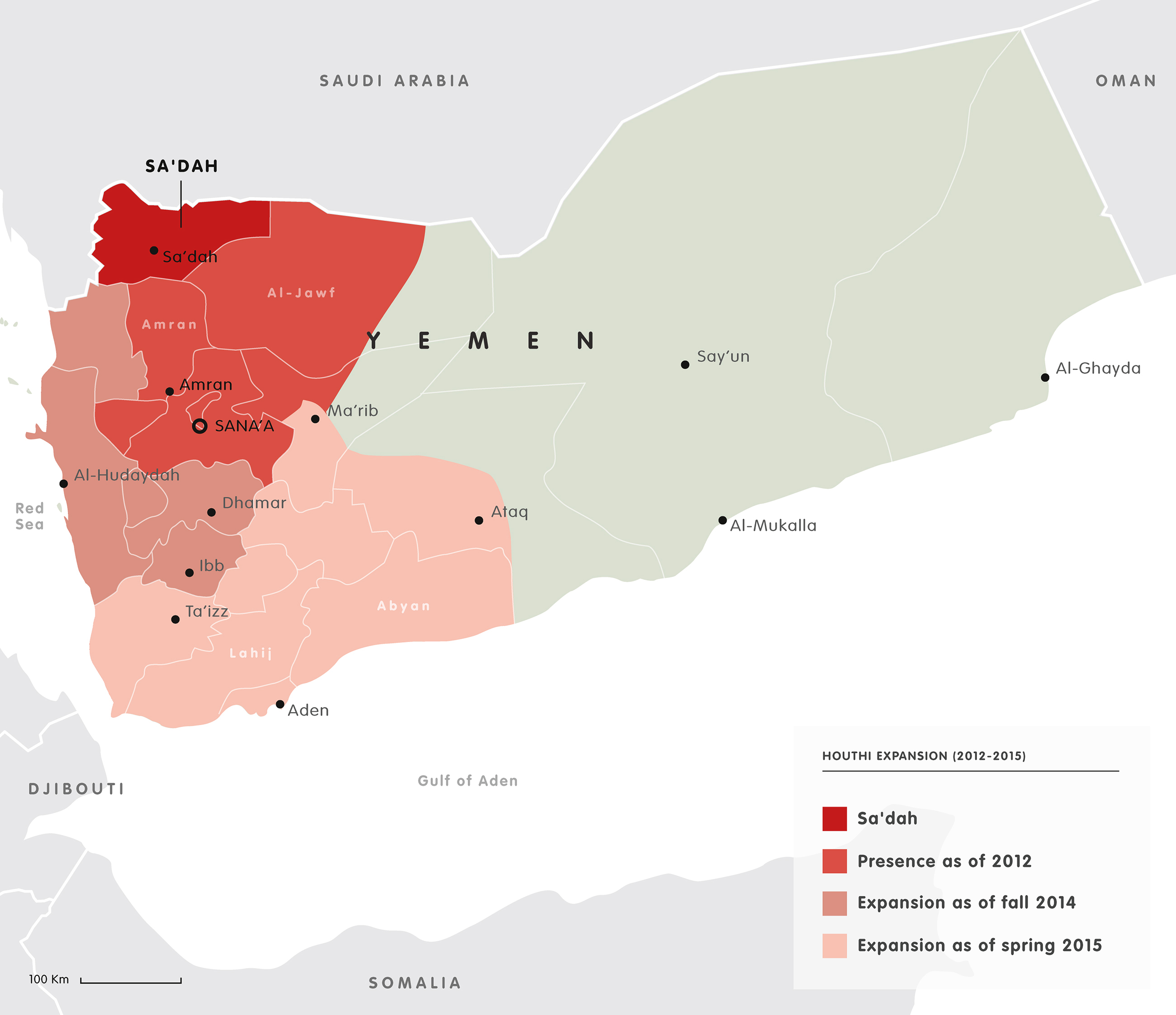
image: ECFR
The Yemeni Army was mainly under the control of members of the Saleh family. Efforts by Hadi to purge the army of Saleh-supporters backfired and led to mutiny, which enabled the Houthis to make their gradual takeover of the capital and the government. When the Houthis formally took over the government, Saleh joined them, bringing approximately two-thirds of the Yemeni military with him. The military units under control of Major-General Ali Mohsen Al Ahmar supported the Islah party, an islamist party historically linked to the Muslim Brotherhood. President Hadi was left with no support from the military but a few units.
In January-April 2015 the Houthis gained military control of the western provinces of Yemen, including most of the west coast and Aden. Forces loyal to Hadi were driven out of Aden, except for a tiny enclave in the harbour, which was sustained by UAE forces. In the eastern provinces the power vacuum enabled Al Qaeda (AQAP or Al Qaeda in the Arab Peninsula) to overrun some military units and some cities, including the harbour of Mukalla.
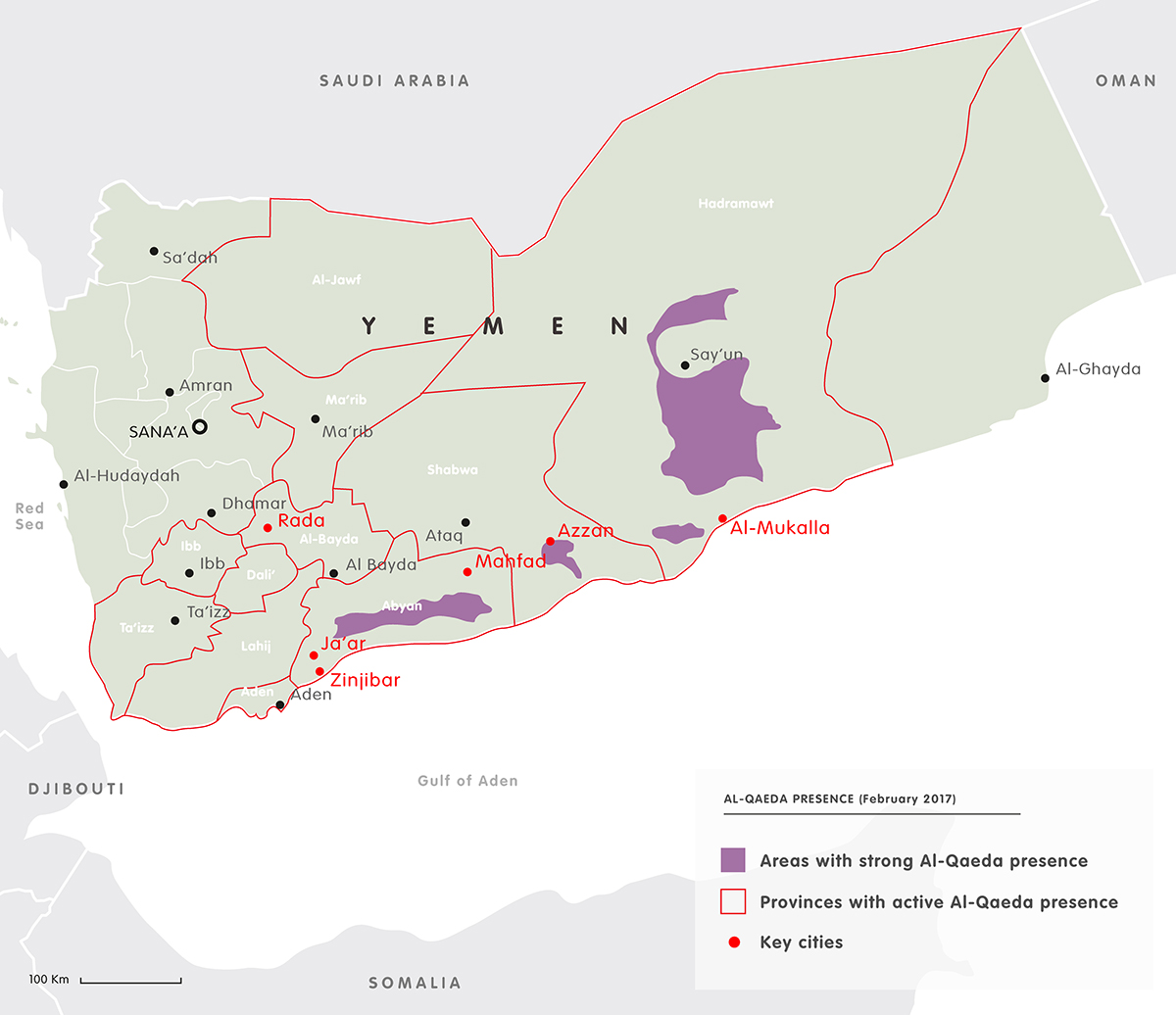
image: ECFR
The Saudi-led military intervention in Yemen
Saudi Arabia could not stomach a southern Shia-led neighbour and responded with military force. On 26 March 2015 a coalition consisting of Saudi Arabia, the UAE, Bahrain, Jordan, Egypt, Kuwait, Morocco, Sudan and Qatar started military operations in Yemen. On 10 April 2015, the Yemeni Government officially closed its territorial waters to commercial and humanitarian shipping, allowing entry only after inspection. As the Hadi government lacked any credible naval forces, enforcement of the blockade fell to the Saudi-led coalition.
These operations are legally covered through a request for military intervention to the GCC and the Arab League by the Hadi government. Although powerless, the Hadi government remains the internationally recognized government of Yemen. For the application of international humanitarian law (IHL) the conflict in Yemen remains a non-international armed conflict, with other states coming to the aid of the government on its request.2
Although the coalition is usually described as 'Saudi-led', it should be recognized that the coalition is in fact led by both Saudi Arabia and the UAE. Throughout the conflict, the two countries have shown divergent strategies and interests.
On the military level, in the air campaign the Saudi air force was predominantly active, while the UAE was the most active force in the naval war. But the largest difference, both in term of military engagement and in strategy, can be seen in the land war. The UAE army is the most active in the coastal areas, while the Saudi army is less engaged and is mostly present in the border area in Northern Yemen and the northern coastal region towards Midi. However, the bulk of the fighting forces are formed by Yemenis trained and armed by the UAE or to a smaller extent by Saudi Arabia. This as part of a newly established Yemeni army or as part of militia forces. They are supported by land forces from other coalition countries as well as mercenaries. Following the killing of Saleh by the Houthis, a large portion of the former Yemeni army loyal to Saleh switched sides again and defected to the Saudi-led coalition.
In the first months of this war it was mostly a large-scale campaign of air strikes, combined with a naval blockade. Within Yemen large-scale fighting took place between Houthi-allied groups and others. Major involvement of the Saudi coalition land forces started with the capture of Aden in July-August 2015 by coalition forces, mainly consisting of UAE forces and Yemeni forces trained by the UAE. The Saudi coalition had expected to push back and defeat the Houthis in short time. It started the operation Desert Storm on 26 March 2015. Officially it was a big success and reached its objectives, to be followed by the operation Restoring Hope on 22 April 2015. This operation never ended. The conflict has led to a military stalemate with none of the parties capable of winning the war, and to large-scale civilian casualties and major humanitarian crises for the population caught in the middle of this conflict.
Footnotes
- https://sipri.org/databases/armstransfers
- Report of the Group of Eminent International and Regional Experts as submitted to the United Nations High Commissioner for Human Rights - Situation of human rights in Yemen, including violations and abuses since September 2014, A/HRC/42/17, par. 9.
